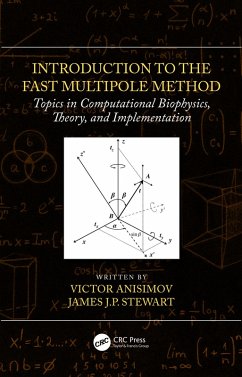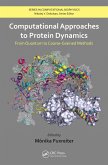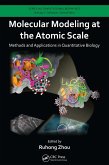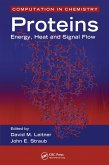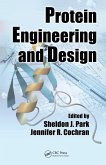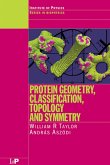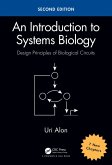Victor Anisimov, James J. P. Stewart
Introduction to the Fast Multipole Method (eBook, ePUB)
Topics in Computational Biophysics, Theory, and Implementation
48,95 €
48,95 €
inkl. MwSt.
Sofort per Download lieferbar

24 °P sammeln
48,95 €
Als Download kaufen

48,95 €
inkl. MwSt.
Sofort per Download lieferbar

24 °P sammeln
Jetzt verschenken
Alle Infos zum eBook verschenken
48,95 €
inkl. MwSt.
Sofort per Download lieferbar
Alle Infos zum eBook verschenken

24 °P sammeln
Victor Anisimov, James J. P. Stewart
Introduction to the Fast Multipole Method (eBook, ePUB)
Topics in Computational Biophysics, Theory, and Implementation
- Format: ePub
- Merkliste
- Auf die Merkliste
- Bewerten Bewerten
- Teilen
- Produkt teilen
- Produkterinnerung
- Produkterinnerung

Bitte loggen Sie sich zunächst in Ihr Kundenkonto ein oder registrieren Sie sich bei
bücher.de, um das eBook-Abo tolino select nutzen zu können.
Hier können Sie sich einloggen
Hier können Sie sich einloggen
Sie sind bereits eingeloggt. Klicken Sie auf 2. tolino select Abo, um fortzufahren.

Bitte loggen Sie sich zunächst in Ihr Kundenkonto ein oder registrieren Sie sich bei bücher.de, um das eBook-Abo tolino select nutzen zu können.
This book introduces the reader to the theory and methodology of quantum-mechanical modeling of chemical and biological systems. Given the immense complexity of such systems, there is a constant search for new methods.
- Geräte: eReader
- ohne Kopierschutz
- eBook Hilfe
- Größe: 3.21MB
Andere Kunden interessierten sich auch für
![Computational Approaches to Protein Dynamics (eBook, ePUB) Computational Approaches to Protein Dynamics (eBook, ePUB)]() Computational Approaches to Protein Dynamics (eBook, ePUB)78,95 €
Computational Approaches to Protein Dynamics (eBook, ePUB)78,95 €![Molecular Modeling at the Atomic Scale (eBook, ePUB) Molecular Modeling at the Atomic Scale (eBook, ePUB)]() Molecular Modeling at the Atomic Scale (eBook, ePUB)48,95 €
Molecular Modeling at the Atomic Scale (eBook, ePUB)48,95 €![Proteins (eBook, ePUB) Proteins (eBook, ePUB)]() Proteins (eBook, ePUB)66,95 €
Proteins (eBook, ePUB)66,95 €![Protein Engineering and Design (eBook, ePUB) Protein Engineering and Design (eBook, ePUB)]() Protein Engineering and Design (eBook, ePUB)50,95 €
Protein Engineering and Design (eBook, ePUB)50,95 €![Protein Geometry, Classification, Topology and Symmetry (eBook, ePUB) Protein Geometry, Classification, Topology and Symmetry (eBook, ePUB)]() William R. TaylorProtein Geometry, Classification, Topology and Symmetry (eBook, ePUB)64,95 €
William R. TaylorProtein Geometry, Classification, Topology and Symmetry (eBook, ePUB)64,95 €![Introduction to Biological Networks (eBook, ePUB) Introduction to Biological Networks (eBook, ePUB)]() Alpan RavalIntroduction to Biological Networks (eBook, ePUB)66,95 €
Alpan RavalIntroduction to Biological Networks (eBook, ePUB)66,95 €![An Introduction to Systems Biology (eBook, ePUB) An Introduction to Systems Biology (eBook, ePUB)]() Uri AlonAn Introduction to Systems Biology (eBook, ePUB)60,95 €
Uri AlonAn Introduction to Systems Biology (eBook, ePUB)60,95 €-
-
-
This book introduces the reader to the theory and methodology of quantum-mechanical modeling of chemical and biological systems. Given the immense complexity of such systems, there is a constant search for new methods.
Dieser Download kann aus rechtlichen Gründen nur mit Rechnungsadresse in A, B, BG, CY, CZ, D, DK, EW, E, FIN, F, GR, HR, H, IRL, I, LT, L, LR, M, NL, PL, P, R, S, SLO, SK ausgeliefert werden.
Produktdetails
- Produktdetails
- Verlag: Taylor & Francis eBooks
- Seitenzahl: 460
- Erscheinungstermin: 6. Dezember 2019
- Englisch
- ISBN-13: 9780429526510
- Artikelnr.: 58387162
- Verlag: Taylor & Francis eBooks
- Seitenzahl: 460
- Erscheinungstermin: 6. Dezember 2019
- Englisch
- ISBN-13: 9780429526510
- Artikelnr.: 58387162
- Herstellerkennzeichnung Die Herstellerinformationen sind derzeit nicht verfügbar.
Victor Anisimov is an Application Performance Engineer at the Argonne Leadership Computing Facility. He holds a Ph.D. degree in Physical Chemistry from the Institute of Chemical Physics of the Russian Academy of Sciences (1997), which was followed by 5 years of computational chemistry software development with Fujitsu, where his team developed the linear scaling semi-empirical quantum chemistry code LocalSCF that expanded the limits of the approximate electronic structure theory to millions of atoms. He performed postdoctoral work at the University of Maryland at Baltimore (2003-2008), and at the University of Texas at Houston (2008-2011), improving molecular dynamics methods and contributing to the CHARMM code. In the National Center for Supercomputing Applications at the University of Illinois at Urbana-Champaign (2011-2019), Dr. Anisimov held the position of Senior Research Scientist, conducted application support for petascale resource allocation teams on the Blue Waters supercomputer, optimized various application codes, and improved the performance and scaling profiles of coupled cluster singles and doubles electronic structure method in NWChem code. Dr. Anisimov works on the faithful representation of long-range electrostatic interactions in large-scale molecular simulations, near-neighbor communication algorithms, and linear-scaling methods. He specializes in performance optimization and fidelity improvements of electronic structure and soft matter simulation application codes on exascale platforms.
James J. P. Stewart pioneered the use of semiempirical quantum chemistry methods in research and teaching. After teaching at the University of Strathclyde in Glasgow, Scotland, he became a researcher at the United States Air Force Academy, then taught as an adjoint professor at the University of Colorado. For the past 30 years, his company, Stewart Computational Chemistry, has been marketing his program, MOPAC, which now has over 30,000 licensed users and groups worldwide. Dr. Stewart has authored over 150 research papers and his works have been cited over 38,000 times.
James J. P. Stewart pioneered the use of semiempirical quantum chemistry methods in research and teaching. After teaching at the University of Strathclyde in Glasgow, Scotland, he became a researcher at the United States Air Force Academy, then taught as an adjoint professor at the University of Colorado. For the past 30 years, his company, Stewart Computational Chemistry, has been marketing his program, MOPAC, which now has over 30,000 licensed users and groups worldwide. Dr. Stewart has authored over 150 research papers and his works have been cited over 38,000 times.
1. Legendre Polynomials 2. Associated Legendre Functions 3. Spherical
Harmonics 4. Angular Momentum 5. Wigner Matrix 6. Clebsch-Gordan
Coefficients 7. Recurrence Relations for Wigner Matrix 8. Solid Harmonics
9. Electrostatic Force 10. Scaling of Solid Harmonics 11. Scaling of
Multipole Translations 12. Fast Multipole Method 13. Multipole Translations
along the z-Axis 14. Rotation of Coordinate System 15. Rotation-Based
Multipole Translations 16. Periodic Boundary Condition
Harmonics 4. Angular Momentum 5. Wigner Matrix 6. Clebsch-Gordan
Coefficients 7. Recurrence Relations for Wigner Matrix 8. Solid Harmonics
9. Electrostatic Force 10. Scaling of Solid Harmonics 11. Scaling of
Multipole Translations 12. Fast Multipole Method 13. Multipole Translations
along the z-Axis 14. Rotation of Coordinate System 15. Rotation-Based
Multipole Translations 16. Periodic Boundary Condition
1. Legendre Polynomials 2. Associated Legendre Functions 3. Spherical
Harmonics 4. Angular Momentum 5. Wigner Matrix 6. Clebsch-Gordan
Coefficients 7. Recurrence Relations for Wigner Matrix 8. Solid Harmonics
9. Electrostatic Force 10. Scaling of Solid Harmonics 11. Scaling of
Multipole Translations 12. Fast Multipole Method 13. Multipole Translations
along the z-Axis 14. Rotation of Coordinate System 15. Rotation-Based
Multipole Translations 16. Periodic Boundary Condition
Harmonics 4. Angular Momentum 5. Wigner Matrix 6. Clebsch-Gordan
Coefficients 7. Recurrence Relations for Wigner Matrix 8. Solid Harmonics
9. Electrostatic Force 10. Scaling of Solid Harmonics 11. Scaling of
Multipole Translations 12. Fast Multipole Method 13. Multipole Translations
along the z-Axis 14. Rotation of Coordinate System 15. Rotation-Based
Multipole Translations 16. Periodic Boundary Condition
